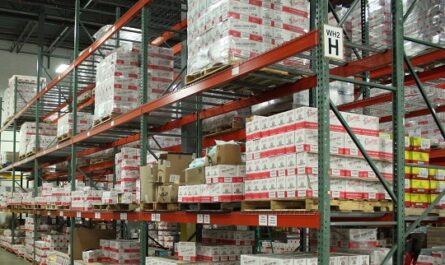Some people just want to show good KPI numbers. They want to avoid questions from Top Management why their KPI targets were not achieved.
There are many ways to get this good KPI number, including changing the calculation method.
The problem with this method is that on the one hand the KPI will look good. Everything looks well managed. However, there is actually a downside to this practice.
Let’s take an example of one of the KPIs, namely the Truck Fill Rate.
Suppose there are two sizes of trucks used, truck 1 has a capacity of 25 m3, while truck 2 has a capacity of 20 m3. Both trucks are used to deliver goods to the same destination with the same transportation costs.
From the calculation of the Truck Fill Rate both show 95%. It can be seen that the two trucks have good occupancy. But is it true? Is there no problem in this?
This is what we will discuss in this post. How and what exactly is the function of the KPIs that we have.
But before we go deeper, make sure you have also joined the scmguide telegram channel because there are many more interesting things about supply chain management that I will share there so you will always get notifications of the latest posts from this blog.
Table of Contents
Problems to solve
Taking the same example as above, what exactly should be done? Is it true that the overall Truck Fill Rate is 95%?
Is it reasonable with the same Truck Filling Rate, with the same cost, but different volumes of goods transported?
Does the Truck Fill Rate have to be calculated based on the capacity of each truck or based on the expected capacity?
You might also like:
- How Wrong Supply Chain Decisions Can Bring a Business Down
- How to Set Cost Reduction Target Based on Supply Chain Cost Drivers
- 6 ERP System Implementation Challenges You Must Overcome
The real problem happened
Let’s take a deeper look.
With the same shipping costs, you must be able to transport goods with the same volume (m3). Otherwise, you will lose.
And in the example above, you will lose because with the same cost, the volume of goods transported by trucks is different.

Truck 2 carries less cargo than truck 1. That means truck 2’s cost/m3 is higher than truck 1.
In terms of Truck Filling Rate, both trucks show the same occupancy, which is 95%, so the problem of cost/m3 above is not detected.
And logically, for the same cost, you have to get the same payload capacity, right?
You have to have a standard, with those costs, what truck capacity you have to get.
Let’s take an example, for these costs you should get a truck with a capacity of 25 m3. So, with a Truck Fill Rate of 95%, the load you carry is 23.8 m3.
However, for truck 2 with a capacity of only 20 m3, you can only transport 19 m3 of cargo assuming a Truck Fill Rate of 95%. And this difference won’t be noticeable if you calculate your Truck’s Fill Rate based on the capacity of each truck.
If using the same standard, say 25 m3, the Truck Fill Rate for truck 2 only reaches 76% (19 m3 divided by 25 m3). From here, you can see that there is a problem with delivery truck 2.
Using the common denominator from the Truck Fill Rate calculation above, you can identify if something needs to be fixed by sending truck 2. And in this case, you should check if truck 2 is really underloaded or there is some other problem. , it turns out that truck 2 has a smaller size than truck 1.
Therefore the solution is to replace truck 2 with the same size as truck 1, not to increase the load on truck 2 because it doesn’t fit in the truck.
And all that you can know if you have the same standards for calculating your KPIs.
Conclusion
KPI is not just a report that must always look good. More than that, the real goal is to capture what’s really going on in your supply chain operations.
That way, you will know whether or not there is a problem with your operation. So you can identify the problem, get to the root cause, and take the appropriate steps to fix it.
Hope it is useful!
If you find this article useful, share it with your other colleagues and join the scmguide telegram channel. There are many more insights about supply chain management that I share there and so you don’t miss the latest post notifications from this blog. All articles on this blog are free for you to use for whatever your purpose, including commercial, without having to provide attribution.

 by
by 

